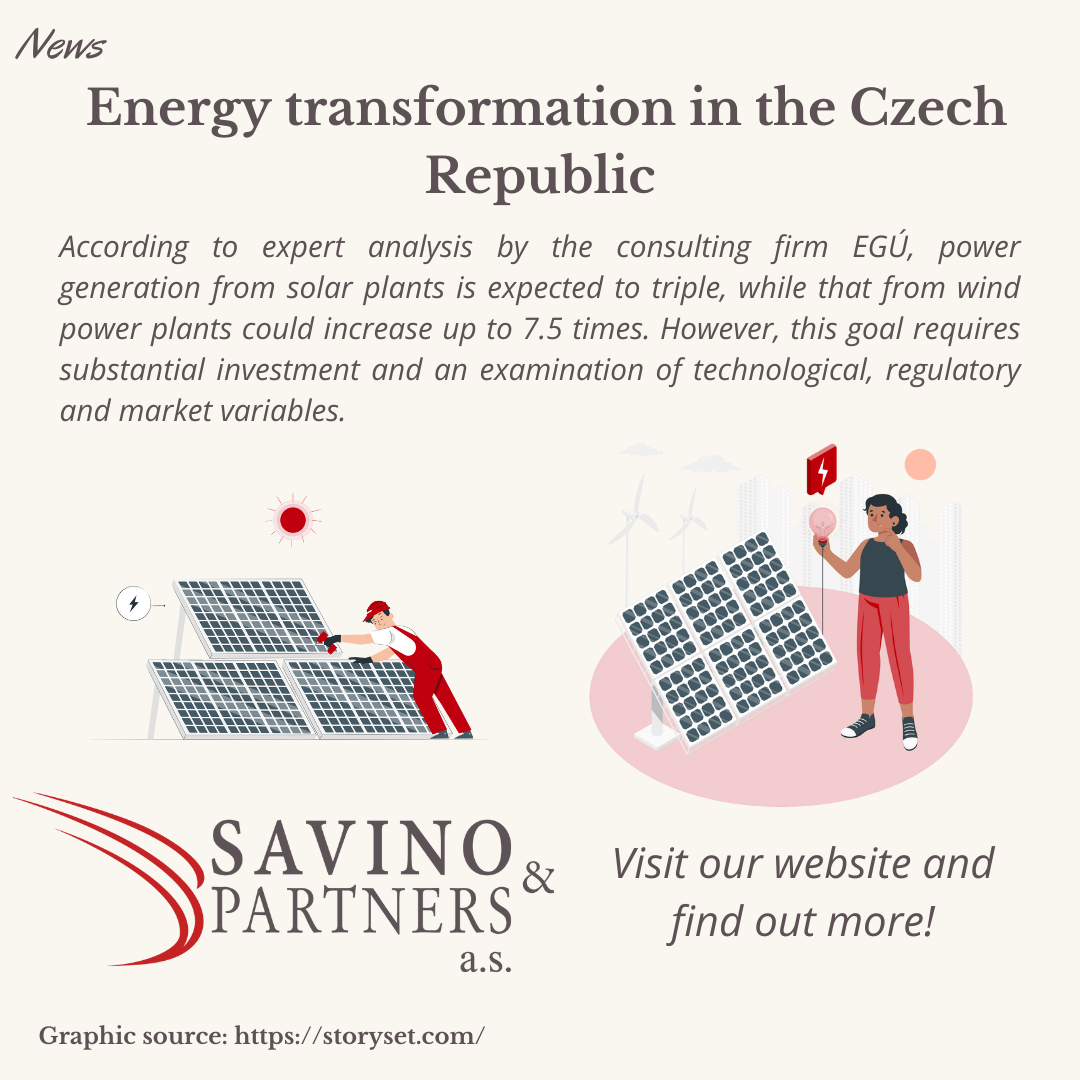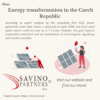The Czech Republic is undergoing a major transformation in the energy sector, with forecasts indicating a considerable increase in energy production from renewable sources over the next decade. According to expert analysis by the consulting firm EGÚ, power generation from solar plants is expected to triple, while that from wind power plants could increase up to 7.5 times. However, this goal requires substantial investment and an examination of technological, regulatory and market variables.

During 2024, photovoltaic installed capacity increased by 70% from the previous year, from an amount at the beginning of the year of about 3.6 GW, while wind capacity stood at 350 MW. EGÚ estimates, that by 2035, photovoltaic production could grow to 8 GW, and in an optimal scenario, up to 11 GW. For wind power, forecasts indicate an increase in capacity to 2.5 GW, with the possibility of expanding to 3.5 GW under ideal conditions. EGÚ Brno Strategy Director, Michal Macenauer, points out that the distinctive aspect in achieving these goals is the ability of the power grid to effectively integrate new energy sources, particularly small decentralized photovoltaic installations up to 1 MW, which make up about 25% of the new capacity. An additional element needed to increase power is government support, both for the establishment of new infrastructure and the strengthening of existing infrastructure.
The Czech Republic has set a goal of eliminating the use of coal in energy production by 2033, exceeding the targets set by the Paris Agreement by three years. This commitment involves investing in projects that may not be immediately profitable but are beneficial for long-term sustainability, such as nuclear power plants and pumped storage hydroelectric plants. Martin Durčák, chairman of the ČEPS board of directors, emphasises that investment in the national transmission and distribution system will have to increase by at least 10 billion crowns a year, reaching about 39 billion crowns annually in the coming years. Legislative reform is also needed to regulate the conditions for the storage and aggregation of generated energy. Crucially, these efforts must be in line with European decarbonization policies and international commitments made at various climate change conferences, such as those in Kyoto, Glasgow, and Dubai.
Starting in 2024, the government reintroduced the PoZe tariff on electricity bills, a payment to support renewable energy sources introduced in 2014 and eliminated the previous year. Due to rising energy prices, the state had decided to subsidize it from the state budget. However, due to price reductions and energy changes, it was reintroduced to ensure a stable purchase price for operators of solar, wind and hydroelectric plants, thus supporting the country’s energy transition. The price can be determined based on consumption (CZK 598.95 with VAT or CZK 495 without VAT per MWh) or, if electricity consumption is higher than normal, based on the switch (CZK 14.33 with VAT or CZK 11.84 without VAT per ampere/month).
In conclusion, the Czech Republic’s efforts to transform its energy mix, aiming to reduce dependence on fossil fuels and increase the presence of renewable energy, are part of a broader European and global initiative. This coordinated effort is essential to address the transition to a cleaner and more sustainable energy system. However, overcoming this challenge requires significant financial investment and technological advancements that are essential to ensure a better future.
Sources: https://www.ceskenoviny.cz/ https://www.canaleenergia.com/ https://tedomenergie.cz/
AI-generated image
Graphic source: https://storyset.com/









